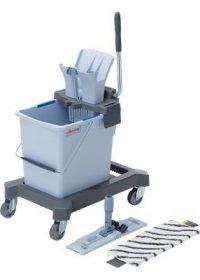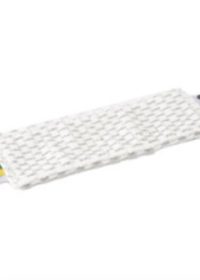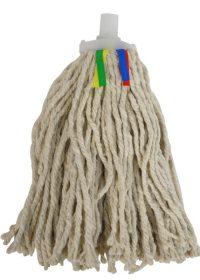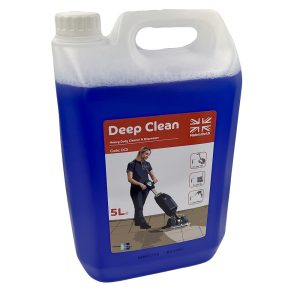There’s so much incorrect information out there that it’s hard to decipher what’s fact and what’s fiction.
Cleaning is hard enough at the best of times, without falling foul of ‘alternative facts’.
That’s why we (with help from Vileda) have debunked a few common cleaning myths, to make your cleaning as quick and easy as can be!
MOPPING MYTHS
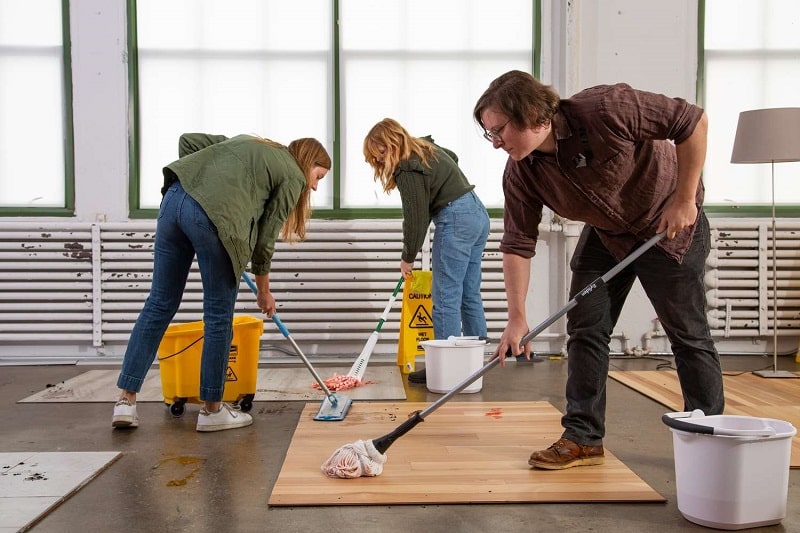
While mopping might not be everyone’s favorite task, it’s possible that our reluctance to explore new methods keeps us trapped in a routine that we believe works effectively. Rather than one that truly delivers the best cleaning results.
Let’s see some of the most common mopping myths:
MYTH: YOU HAVE TO MOP YOUR FLOORS WITH BOILING WATER
Many people think you need to mop with boiling water to thoroughly clean your floors.
This, however, is a myth – rather than always giving you a better clean, the temperature of the water can actually have a negative effect.
Any grease or oils that may be on your floor can react with boiling water, softening and spreading while you’re mopping. Meaning you’re actually spreading the mess around rather than cleaning it up.
This is one of the reasons why most cleaning agents recommend using warm water rather than boiling. Remember to always use a mop with microfibre for cleaning up greasy mess.
MYTH : THE BEST WAY TO CLEAN YOUR FLOORS IS PULLING AND PUSHING YOUR MOP BACK AND FORWARDS
Although you may think this is correct, it’s actually not always the most effective way to clean your floors.
Only mopping in a backwards and forwards motion means you’re just dispersing the dirt and debris around your floor rather than pulling it up.
This is why so many cleaning gurus swear by the ‘Figure of 8’ technique when mopping the floors. This is especially effective when you are using a traditional cloth mop like the Excel Mop, or the Vileda UltraSpeed.
Mopping in an ‘8’ shape whilst pulling the mops towards you means you’re collecting the dirt rather than dispersing it, so you’re using your mop most effectively to get the best clean.
MYTH : MOP HEADS DON’T NEED TO BE CLEANED REGULARLY, AS THE MOP WATER CLEANS IT FOR ME!
Wrong, wrong, wrong!
Your mop head is the single most important piece of your mop to ensure an effective clean. If this isn’t clean before you start, you will effectively just be spreading more dirt around your home every time you mop.
It’s advisable to wash your mop head after use to maintain its cleanliness – you should always check the packaging to find out the best way to clean your mop, as some have a detachable head that you can put in the washing machine.
Remember – don’t use fabric softener as this affects the performance of the microfibres on the mop head.
Another top tip – make sure your mop head is completely dry before putting it away, so why not pop your mop head outside on a clear day to let it air-dry?
MODERN MISCONCEPTIONS
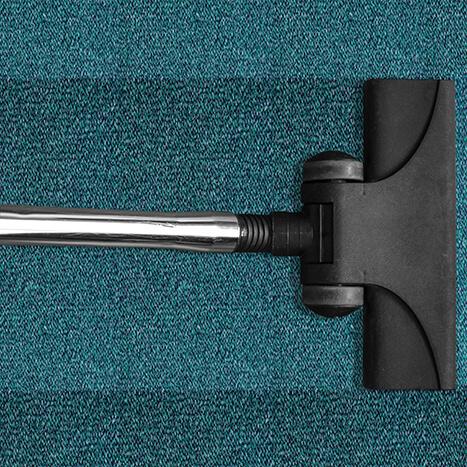
Don’t get caught out… There’s plenty of common household tips and tricks that can easily be debunked… It’s not just mopping myths that can trip you up.
MYTH : MY CARPET LOOKS CLEAN, SO IT MUST BE CLEAN, RIGHT?
A cardinal rule of cleaning is just because something looks okay doesn’t mean it is okay.
There’s a huge difference between ‘not dirty’ and ‘clean’ – so don’t judge on looks alone, as looks can be deceiving!
One of the best examples of this is your carpet. Sure, it might look okay on the surface, but if you’ve not vacuumed in more than a few days, the chances are it’s in need of a good clean.
Don’t believe us? Well, according to research conducted by Men’s Health Magazine, the carpet in your home is on average 4,000 times dirtier than your toilet (and that’s before you’ve not looked after it for over a week!)
Good Housekeeping advised you should vacuum at least once a week, but if you also want to refresh your carpets a steam machine may be a benefit.
MYTH : LEAVING LAUNDRY IN THE WASHING MACHINE FOR A LONG WHILE AFTER IT’S RUN ITS CYCLE IS FINE
We all do it – the washing machine beeps when it’s finished, but we think to ourselves: “I’ll just finish this and then get them out later”.
Well, if ‘later’ is over half an hour, this could be affecting your clothes (and perhaps even your health!)
According to Healthline, if clothes sit in the washer for more than 30 minutes, you may want to run a second cycle as it can collect debris and bacteria when it’s left sitting damp in the drum.
To make sure your clothes are in tip-top shape after being in the washing machine, we’d recommend putting your clothes on an outdoor rotary when you can, and leave to air-dry on a dry day.
However, it’s not always possible to get your clothes on the line outside.
In times like this, the best option is putting your clothes on an indoor airer as soon as your washing machine cycle has finished.
So there you have it – our top cleaning misconceptions. Comment below if you have any cleaning ‘hacks’ you want to debunk!
Our thanks to our friends at Vileda for the handy info in this blog. 👍
====

Don’t forget to follow us on our socials for our latest updates:

